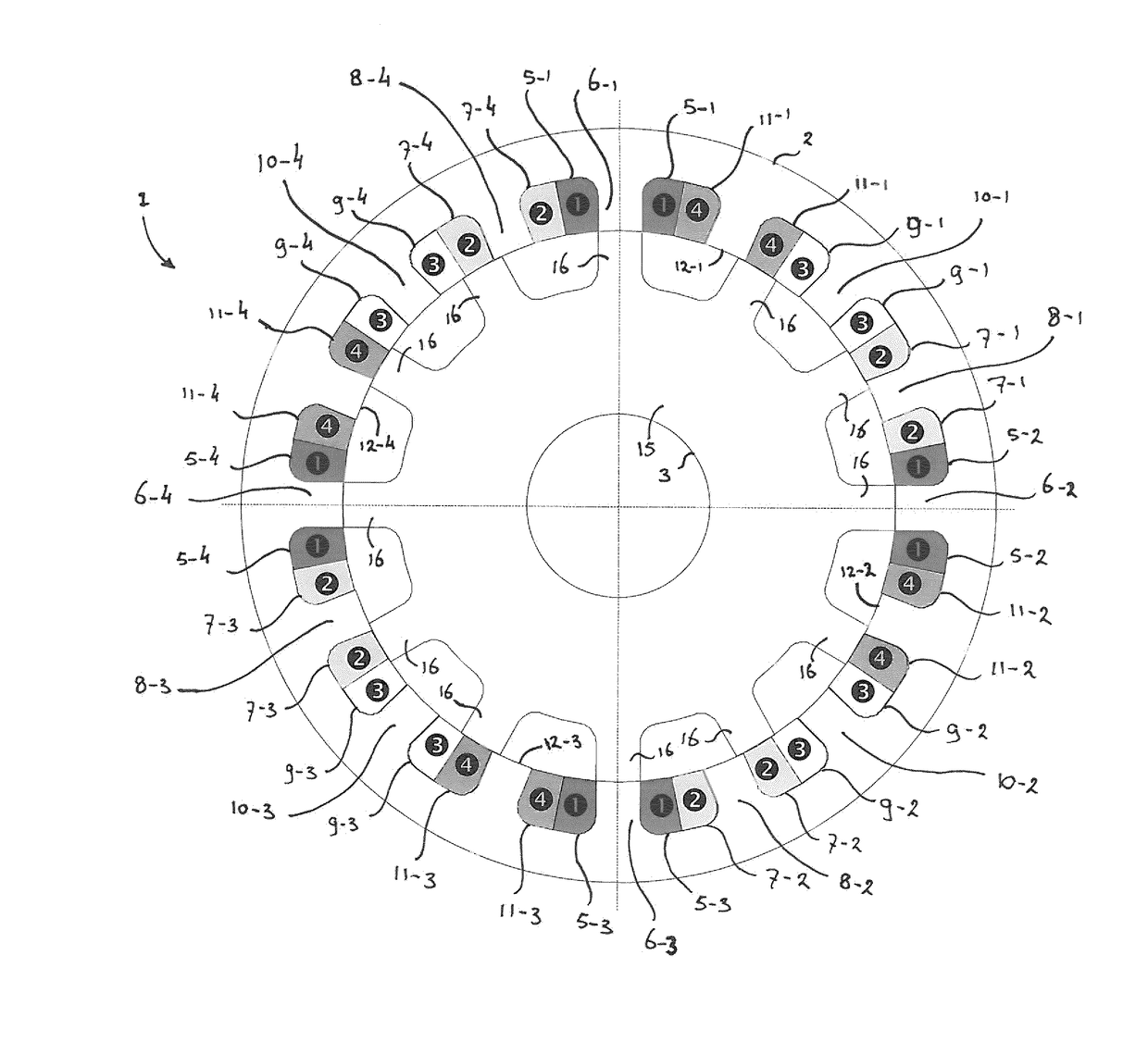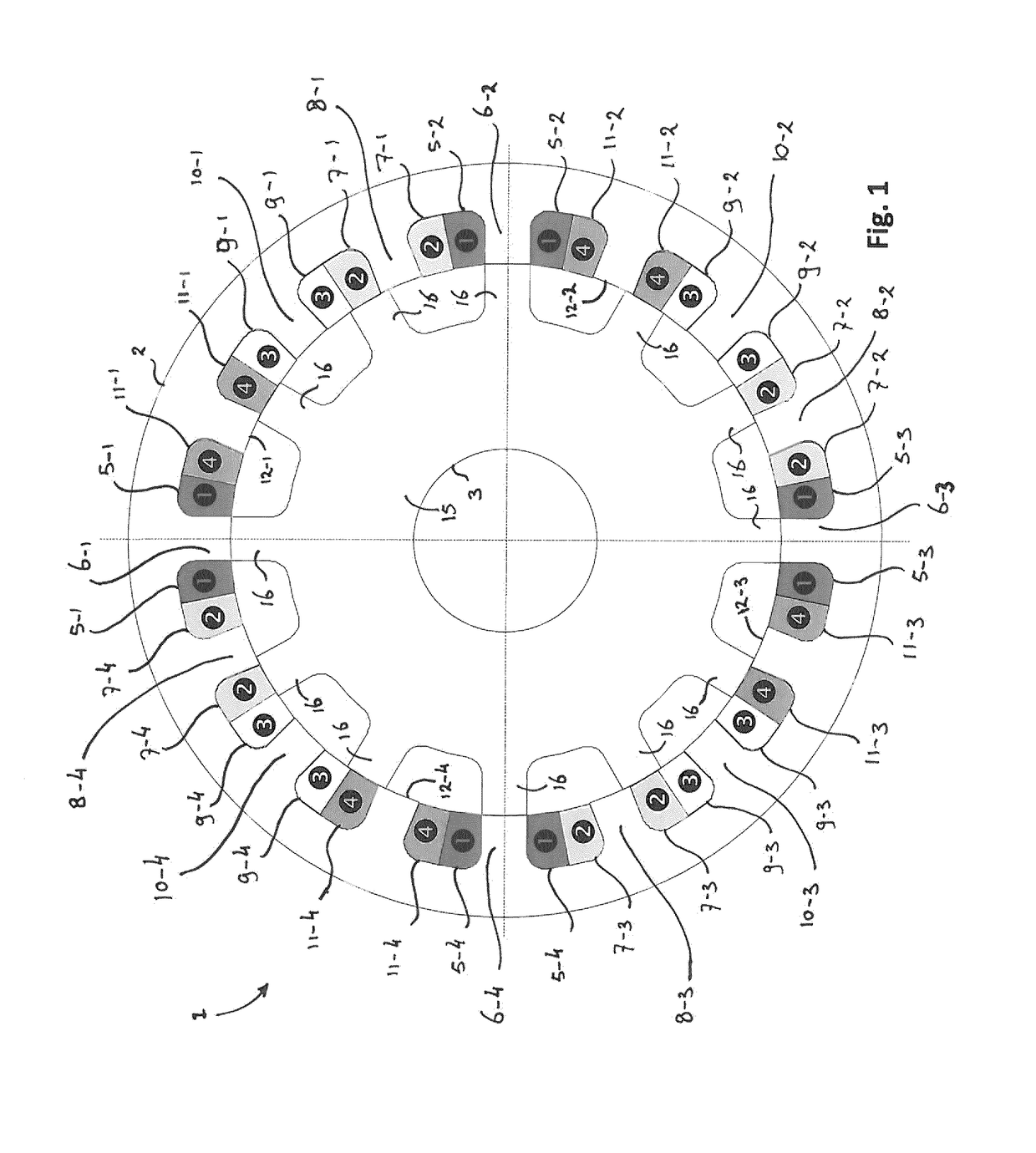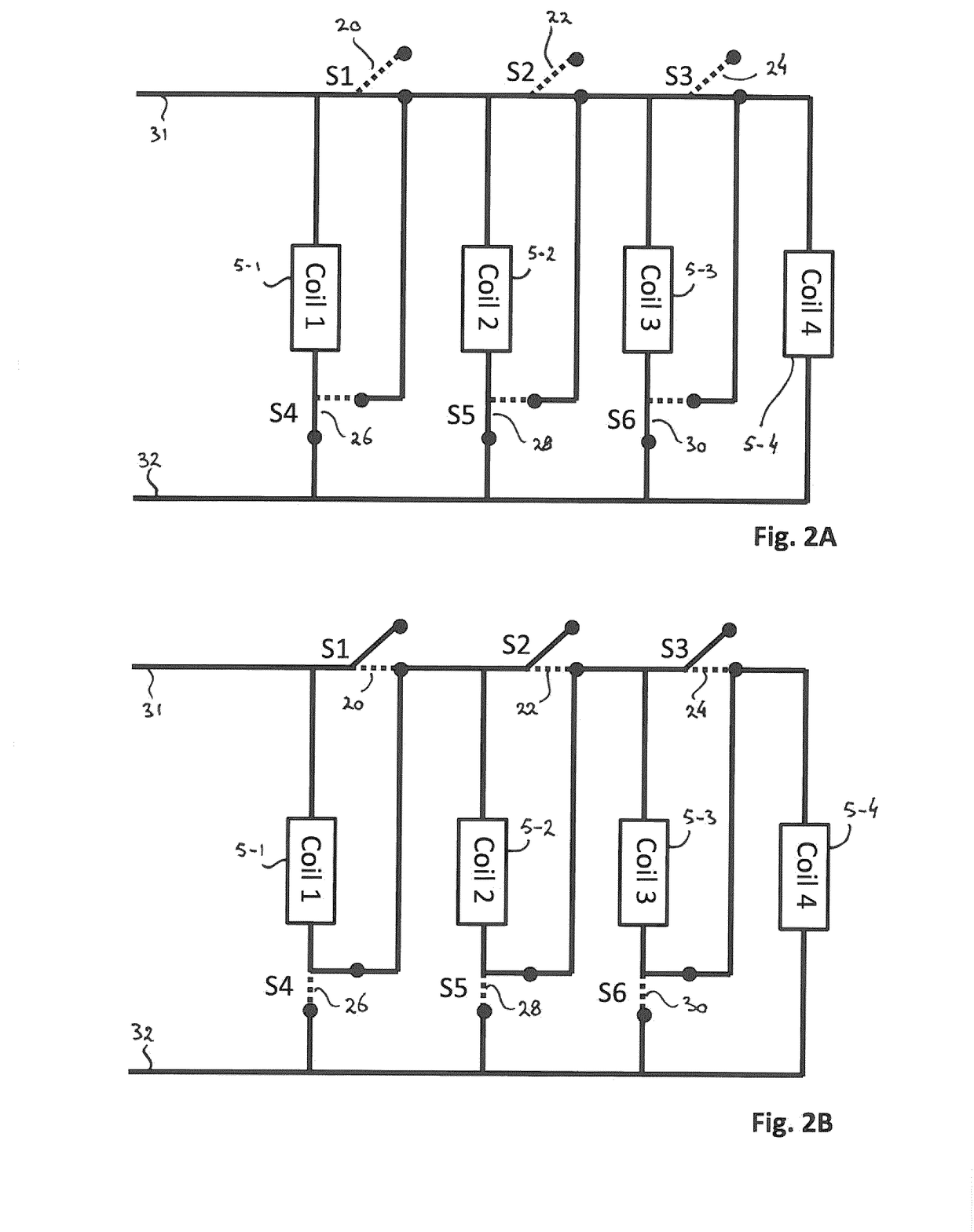Switched reluctance motor and method therefore
a technology of resistive motor and resistive motor, which is applied in the direction of electronic commutation motor control, synchronous motors, rotating magnets, etc., can solve the problems of less time available for current to build up and large induced torque, and achieves increased counter-electromotive force, large induced torque, and rapid torque drop
- Summary
- Abstract
- Description
- Claims
- Application Information
AI Technical Summary
Benefits of technology
Problems solved by technology
Method used
Image
Examples
Embodiment Construction
[0039]The figures include a large number of reference signs indicating various components, parts and / or aspects of the embodiments that are schematically illustrated. In addition, reference is made to various phase stages by referring to a phase stage number illustrated as a black dot with a number, i.e. phase stages , , , and . These phase stage numbers are not to be mistaken for the reference numerals (which include for example the motor 1, the stator 2 or the rotor 3). Therefore, the notation of the phase stage numbers , , , and is used accordingly in the description to identify the phase stages, whereas the reference numerals to the motor, stator and rotor are provided as regular numbers.
[0040]FIG. 1 schematically illustrates a switched reluctance motor in accordance with the present invention. The switched reluctance motor 1 comprises a stator 2 and a rotor 3. The rotor 3 is rotatable with respect to the stator 2, for example by suspending the rotor 3 using suitable bearings (...
PUM
 Login to View More
Login to View More Abstract
Description
Claims
Application Information
 Login to View More
Login to View More - R&D
- Intellectual Property
- Life Sciences
- Materials
- Tech Scout
- Unparalleled Data Quality
- Higher Quality Content
- 60% Fewer Hallucinations
Browse by: Latest US Patents, China's latest patents, Technical Efficacy Thesaurus, Application Domain, Technology Topic, Popular Technical Reports.
© 2025 PatSnap. All rights reserved.Legal|Privacy policy|Modern Slavery Act Transparency Statement|Sitemap|About US| Contact US: help@patsnap.com



